
Keywords: mouse

|
Leveraging a natural murine meiotic drive to suppress invasive populationsL. Gierus, A. Birand, M. D. Bunting, G. I. Godahewa, S. G. Piltz, K. P. Oh, A. J. Piaggio, D. W. Threadgill, J. Godwin, O. Edwards, P. Cassey, J. V. Ross, T. A. A. Prowse and P. Q. Thomas, bioRxiv, 2022.05.31.494104. 2022.
Invasive rodents, including house mice, are a major cause of environmental damage and biodiversity loss, particularly in island ecosystems. Eradication can be achieved through the distribution of rodenticide, but this approach is expensive to apply at scale, can have negative ... Keywords: Biochemistry & Molecular Biology, dynamics, Environmental Sciences & Ecology, Evolutionary Biology, experimental evolution, Gene drive, gene drive ecology, gene drive evolution, house mouse, low-frequency, male-fertility, mate choice, meiotic drive, mouse, multiple paternity, natural-populations, polyandry, selection, sexual, sperm competition, t-haplotypes, tailless, wild populations |

|
Meiotic Cas9 expression mediates gene conversion in the male and female mouse germlineA. J. Weitzel, H. A. Grunwald, C. Weber, R. Levina, V. M. Gantz, S. M. Hedrick, E. Bier and K. L. Cooper, PLOS Biology, 19:e3001478. 2021.
Highly efficient gene conversion systems have the potential to facilitate the study of complex genetic traits using laboratory mice and, if implemented as a “gene drive,” to limit loss of biodiversity and disease transmission caused by wild rodent populations. We previously ... Keywords: Biochemistry & Molecular Biology, dynamics, Environmental Sciences & Ecology, Evolutionary Biology, experimental evolution, Gene drive, gene drive ecology, gene drive evolution, house mouse, low-frequency, male-fertility, mate choice, meiotic drive, mouse, multiple paternity, natural-populations, polyandry, selection, sexual, sperm competition, t-haplotypes, tailless, wild populations |

|
CRISPR-Cas9 effectors facilitate generation of single-sex litters and sex-specific phenotypesC. Douglas, V. Maciulyte, J. Zohren, D. M. Snell, S. K. Mahadevaiah, O. A. Ojarikre, P. J. I. Ellis and J. M. A. Turner, Nature Communications, 12:6926. 2021.
Animals are essential genetic tools in scientific research and global resources in agriculture. In both arenas, a single sex is often required in surplus. The ethical and financial burden of producing and culling animals of the undesired sex is considerable. Using the mouse as a ... Keywords: Biochemistry & Molecular Biology, dynamics, Environmental Sciences & Ecology, Evolutionary Biology, experimental evolution, Gene drive, gene drive ecology, gene drive evolution, house mouse, low-frequency, male-fertility, mate choice, meiotic drive, mouse, multiple paternity, natural-populations, polyandry, selection, sexual, sperm competition, t-haplotypes, tailless, wild populations |

|
Generating single-sex litters: development of CRISPR-Cas9 genetic tools to produce all-male offspringC. Douglas, V. Maciulyte, J. Zohren, D. M. Snell, O. A. Ojarikre, P. J. Ellis and J. M. A. Turner, bioRxiv, 2020.09.07.285536. 2020.
Using the mouse as a model, we developed a synthetic, two-part bicomponent strategy for generating all-male litters. Keywords: Biochemistry & Molecular Biology, dynamics, Environmental Sciences & Ecology, Evolutionary Biology, experimental evolution, Gene drive, gene drive ecology, gene drive evolution, house mouse, low-frequency, male-fertility, mate choice, meiotic drive, mouse, multiple paternity, natural-populations, polyandry, selection, sexual, sperm competition, t-haplotypes, tailless, wild populations |

|
Super-Mendelian inheritance mediated by CRISPR-Cas9 in the female mouse germlineH. A. Grunwald, V. M. Gantz, G. Poplawski, X.-r. S. Xu, E. Bier and K. L. Cooper, TAGC 2020, 2020.
A gene drive biases the transmission of one of the two copies of a gene such that it is inherited more frequently than by random segregation. Highly efficient gene drive systems that have recently been developed in insects, which leverage the sequence-targeted DNA cleavage ... Keywords: Biochemistry & Molecular Biology, dynamics, Environmental Sciences & Ecology, Evolutionary Biology, experimental evolution, Gene drive, gene drive ecology, gene drive evolution, house mouse, low-frequency, male-fertility, mate choice, meiotic drive, mouse, multiple paternity, natural-populations, polyandry, selection, sexual, sperm competition, t-haplotypes, tailless, wild populations |
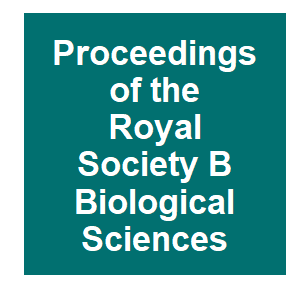
|
Rodent gene drives for conservation: opportunities and data needsJ. Godwin, M. Serr, K. Barnhill-Dilling, D. V. Blondel, P. R. Brown, K. Campbell, J. Delborne, A. L. Lloyd, K. P. Oh, T. A. A. Prowse, R. Saah and P. Thomas, Proceedings of the Royal Society B-Biological Sciences, 286:20191606. 2019.
Invasive rodents impact biodiversity, human health and food security worldwide. The biodiversity impacts are particularly significant on islands, which are the primary sites of vertebrate extinctions and where we are reaching the limits of current control technologies. Gene ... Keywords: Biochemistry & Molecular Biology, dynamics, Environmental Sciences & Ecology, Evolutionary Biology, experimental evolution, Gene drive, gene drive ecology, gene drive evolution, house mouse, low-frequency, male-fertility, mate choice, meiotic drive, mouse, multiple paternity, natural-populations, polyandry, selection, sexual, sperm competition, t-haplotypes, tailless, wild populations |
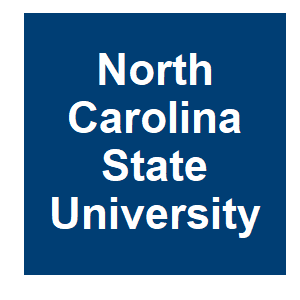
|
Exploring Stakeholder Perspectives on the Development of a Gene Drive Mouse for Biodiversity Protection on Islands: Workshop ReportM. Farooque, S. K. Barnhill-Dilling, J. Shapiro and J. Delborne, North Carolina State University, 2019.
The “Exploring Stakeholder Perspectives on the Development of a Gene Drive Mouse for Biodiversity Protection” workshop was held on the North Carolina State University campus in Raleigh, NC on March 7-8, 2019, aiming to convene a diverse group of stakeholders, scientists, ... Keywords: Biochemistry & Molecular Biology, dynamics, Environmental Sciences & Ecology, Evolutionary Biology, experimental evolution, Gene drive, gene drive ecology, gene drive evolution, house mouse, low-frequency, male-fertility, mate choice, meiotic drive, mouse, multiple paternity, natural-populations, polyandry, selection, sexual, sperm competition, t-haplotypes, tailless, wild populations |
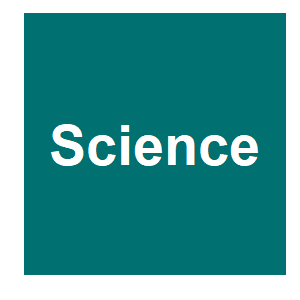
|
How selfish DNA hijacks its way into egg cellsScience Magazine, Science, 2017.
This video was produced by Science magazine and explains and illustrates how gonotaxis or the asymmetrical allocation of chromosomes to developing female gametes occurs in mice. This video reflects an understanding of this process based on the publication by Akera et al (2017). Keywords: Biochemistry & Molecular Biology, dynamics, Environmental Sciences & Ecology, Evolutionary Biology, experimental evolution, Gene drive, gene drive ecology, gene drive evolution, house mouse, low-frequency, male-fertility, mate choice, meiotic drive, mouse, multiple paternity, natural-populations, polyandry, selection, sexual, sperm competition, t-haplotypes, tailless, wild populations |
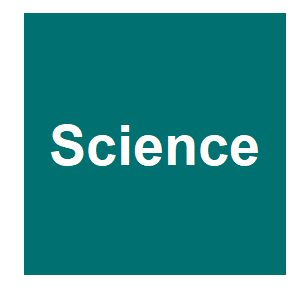
|
Spindle asymmetry drives non-Mendelian chromosome segregationT. Akera, L. Chmátal, E. Trimm, K. Yang, C. Aonbangkhen, D. M. Chenoweth, C. Janke, R. M. Schultz and M. A. Lampson, Science, 358:668. 2017.
Genetic elements compete for transmission through meiosis, when haploid gametes are created from a diploid parent. Selfish elements can enhance their transmission through a process known as meiotic drive. In female meiosis, selfish elements drive by preferentially attaching to ... Keywords: Biochemistry & Molecular Biology, dynamics, Environmental Sciences & Ecology, Evolutionary Biology, experimental evolution, Gene drive, gene drive ecology, gene drive evolution, house mouse, low-frequency, male-fertility, mate choice, meiotic drive, mouse, multiple paternity, natural-populations, polyandry, selection, sexual, sperm competition, t-haplotypes, tailless, wild populations |

|
Sperm competition suppresses gene drive among experimentally evolving populations of house miceManser, AL, A. K.; Simmons, L. W.; Firman, R. C., Molecular Ecology, 26:5784-5792. 2017.
Drive genes are genetic elements that manipulate the 50% ratio of Mendelian inheritance in their own favour, allowing them to rapidly propagate through populations. The action of drive genes is often hidden, making detection and identification inherently difficult. Yet drive ... Keywords: Biochemistry & Molecular Biology, dynamics, Environmental Sciences & Ecology, Evolutionary Biology, experimental evolution, Gene drive, gene drive ecology, gene drive evolution, house mouse, low-frequency, male-fertility, mate choice, meiotic drive, mouse, multiple paternity, natural-populations, polyandry, selection, sexual, sperm competition, t-haplotypes, tailless, wild populations |

|
Meiotic drive changes sperm precedence patterns in house mice: potential for male alternative mating tactics?Sutter, AL, A. K., BMC Evolutionary Biology, 16:15. 2016.
Background: With female multiple mating (polyandry), male-male competition extends to after copulation (sperm competition). Males respond to this selective pressure through physiological, morphological and behavioural adaptations. Sperm competitiveness is commonly decreased in ... Keywords: Biochemistry & Molecular Biology, dynamics, Environmental Sciences & Ecology, Evolutionary Biology, experimental evolution, Gene drive, gene drive ecology, gene drive evolution, house mouse, low-frequency, male-fertility, mate choice, meiotic drive, mouse, multiple paternity, natural-populations, polyandry, selection, sexual, sperm competition, t-haplotypes, tailless, wild populations |
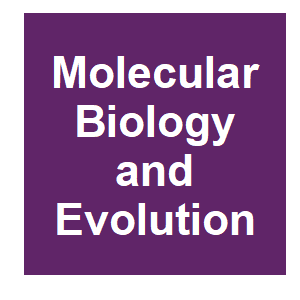
|
R2d2 drives selfish sweeps in the house mouseDidion, JPM, A. P.; Yadgary, L.; Bell, T. A.; McMullan, R. C.; de Solorzano, L. O.; Britton-Davidian, J.; Bult, C. J.; Campbell, K. J.; Castiglia, R.; Ching, Y. H.; Chunco, A. J.; Crowley, J. J.; Chesler, E. J.; Forster, D. W.; French, J. E.; Gabriel, S. I.; Gatti, D. M.; Garland, T.; Giagia-Athanasopoulou, E. B.; Gimenez, M. D.; Grize, S. A.; Gunduz, I.; Holmes, A.; Hauffe, H. C.; Herman, J. S.; Holt, J. M.; Hua, K. J.; Jolley, W. J.; Lindholm, A. K.; Lopez-Fuster, M. J.; Mitsainas, G.; Mathias, M. D.; McMillan, L.; Ramalhinho, M. D. M.; Rehermann, B.; Rosshart, S. P.; Searle, J. B.; Shiao, M. S.; Solano, E.; Svenson, K. L.; Thomas-Laemont, P.; Threadgill, D. W.; Ventura, J.; Weinstock, G. M.; Pomp, D.; Churchill, G. A.; de Villena, F. P. M., Molecular Biology and Evolution, 33:1381-1395. 2016.
A selective sweep is the result of strong positive selection driving newly occurring or standing genetic variants to fixation, and can dramatically alter the pattern and distribution of allelic diversity in a population. Population-level sequencing data have enabled discoveries ... Keywords: Biochemistry & Molecular Biology, dynamics, Environmental Sciences & Ecology, Evolutionary Biology, experimental evolution, Gene drive, gene drive ecology, gene drive evolution, house mouse, low-frequency, male-fertility, mate choice, meiotic drive, mouse, multiple paternity, natural-populations, polyandry, selection, sexual, sperm competition, t-haplotypes, tailless, wild populations |

Contact
David O’Brochta
Foundation for the
National Institutes of Health
geneconvenevi@fnih.org
RSS

